PSV Eindhoven failed to win the Eredivisie title in Roger Schmidt’s first season on charge, with Ajax absolutely dominating the league and finishing 16 points clear. There were many positives in their season though, and the improvement that came with the new manager was evident.
A crucial part of their performance were the attacking players Donyell Malen and Eran Zahavi, who were the main figures in attack and often secured the three points for their team. This scout report includes tactical analysis and looks into Malen’s performance and what made him the club’s top goalscorer with 19 goals and eight assists in 32 appearances.
Adding eight more goals in the side competitions underlined his importance for PSV even more as he showed consistency following two very successful seasons. At the age of 22, Malen became the second-best goalscorer in Eredivisie’s 2020/21 season.
Becoming part of the Netherlands’ Euro 2020 squad is a huge step in his career and with an agent like Mino Raiola, Malen seems to be closer to a deal with Liverpool who are reportedly ready to pay 26M for his signature. His proficiency and vision at this young age are definitely something that can make his ex-club Arsenal regret letting him go.
Main traits and how he fits PSV’s style of play
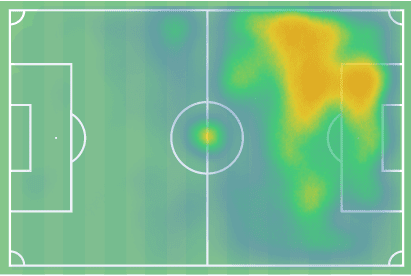
Malen is not the typical target-man and wouldn’t only stay in and around the box, waiting to receive a pass and utilise chances. His style of play is way more complex as he relies on pace, passing and strong positioning to both create chances for his teammates and also take advantage of the opportunities in front of the goal.
He can play on both flanks where he can use his pace and dribbling abilities to progress the ball and deliver it to quality areas, but he is mainly used as a centre-forward in a 4-4-2 formation, where he occupies the box, the half-spaces and goes out wide too. Schmidt favoured the 4-4-2 scheme but he did have some alternatives, switching to 4-3-3, 4-2-2-2 and 4-2-3-1 where Malen would sometimes be employed as a left-wing and still fit his tactics.
His link-up-play ability is useful in all areas and is something that helps the team in progressing the ball and employing their attacking strategy successfully.
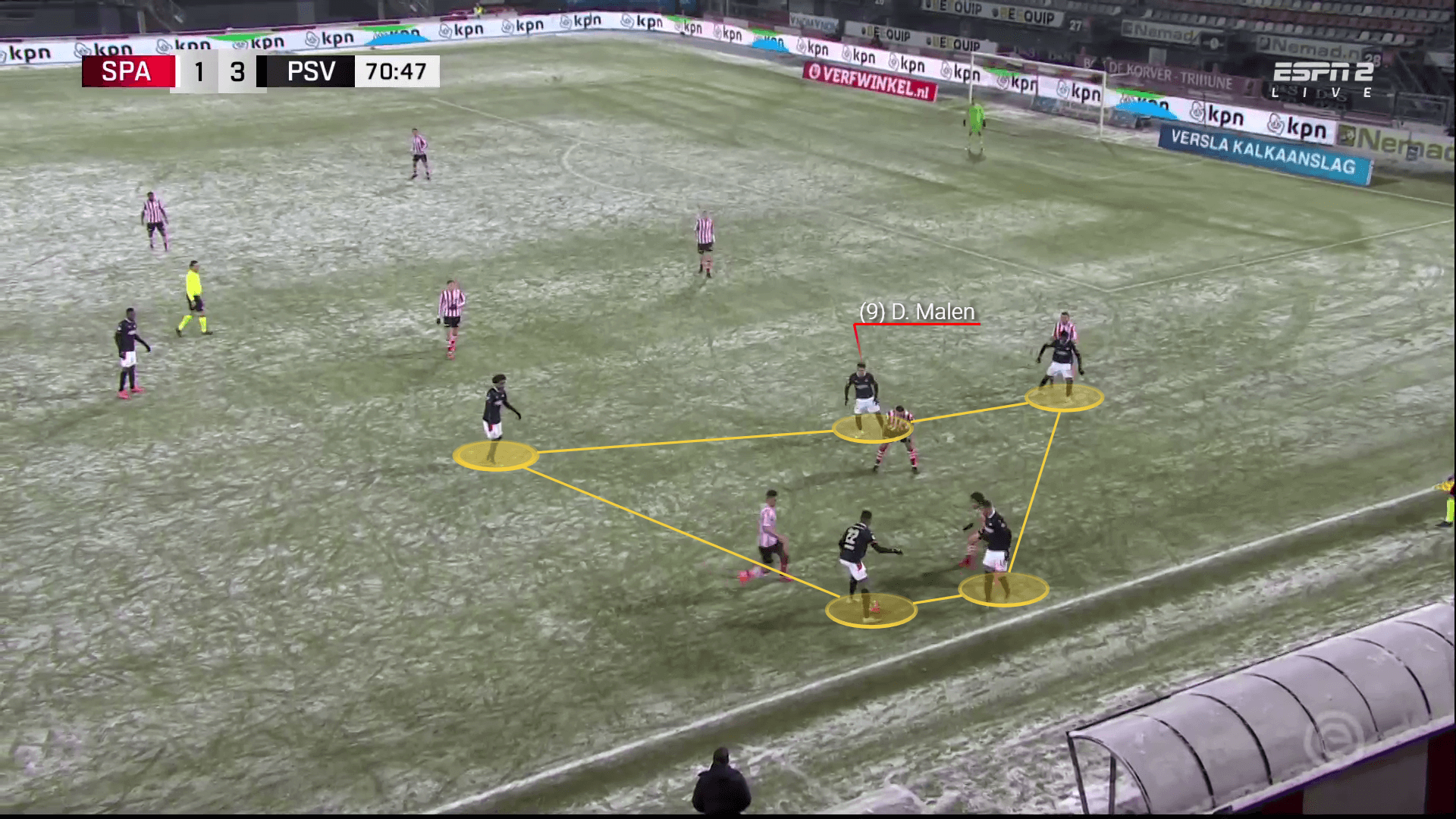
PSV’s movement in attack is very distinguished as they tend to attack through the wings and use a lot of movement and passing. They have a possession-based approach which makes Malen’s ability to hold on to the ball very beneficial as they rely on his ball control and spatial awareness in their efforts to retain possession and create goalscoring opportunities.
Positioning and link-up-play
Malen’s pace and spatial awareness are among his strongest assets that set him apart from the others. Using his speed and control to take on defenders on the flanks has been very useful in PSV’s set-up as they tend to play with width. Relying on his dribbling abilities and reactions in 1vs1 situations has been beneficial for the team, as not only he can easily move with the ball to goalscoring positions, but he can also cross it and create for his teammates.
He uses his speed to make runs to freed up spaces and often breaks defensive structures with his movement. Constantly being aware of his surroundings and being able to anticipate his teammates’ passes and movement makes him a great threat in the box and in the half-spaces, where he often moves off the ball and is able to receive it in quality positions. With his positioning, he provides additional passing options and helps the team create chances but also provides a direct threat to the goal.
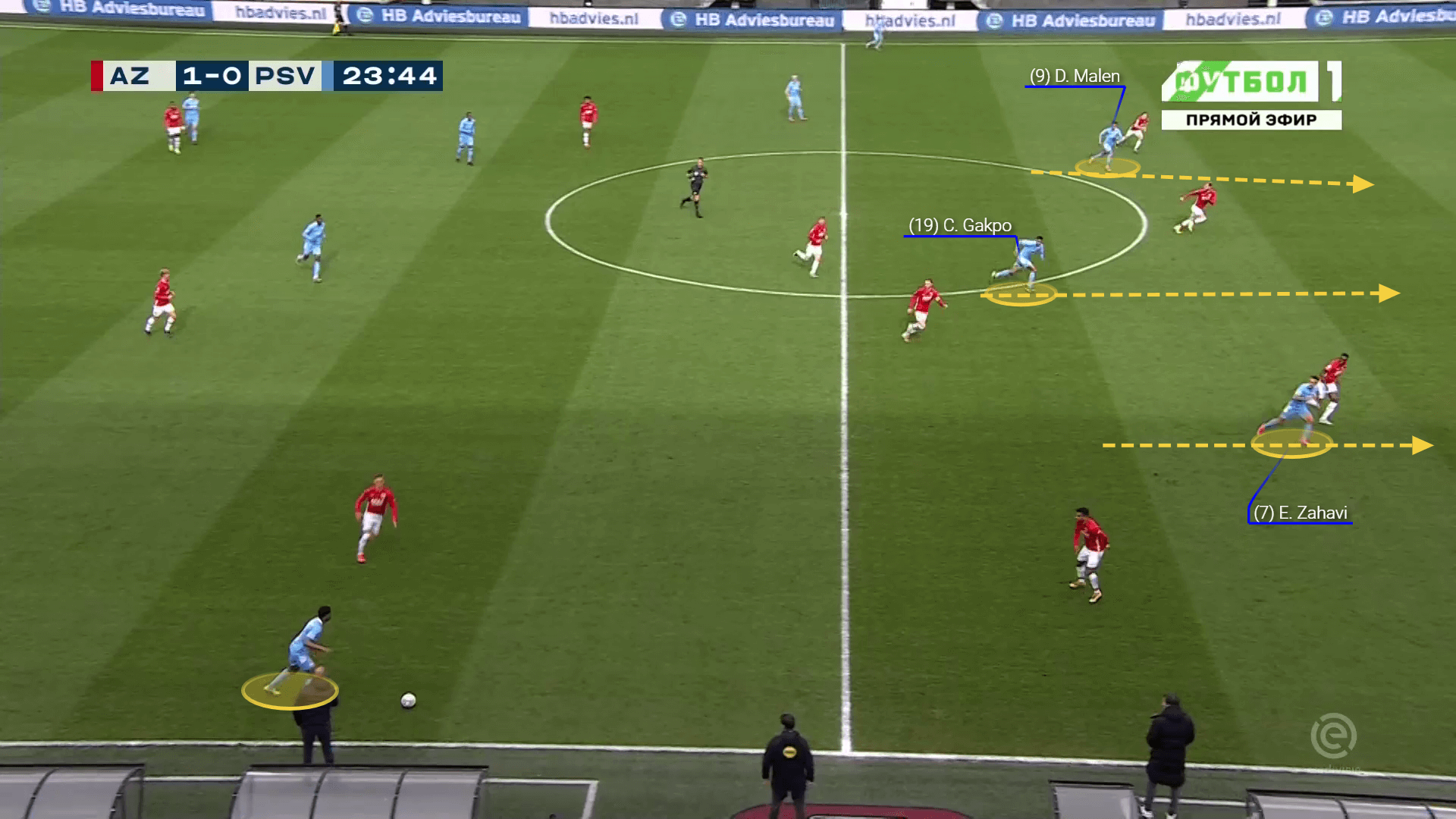
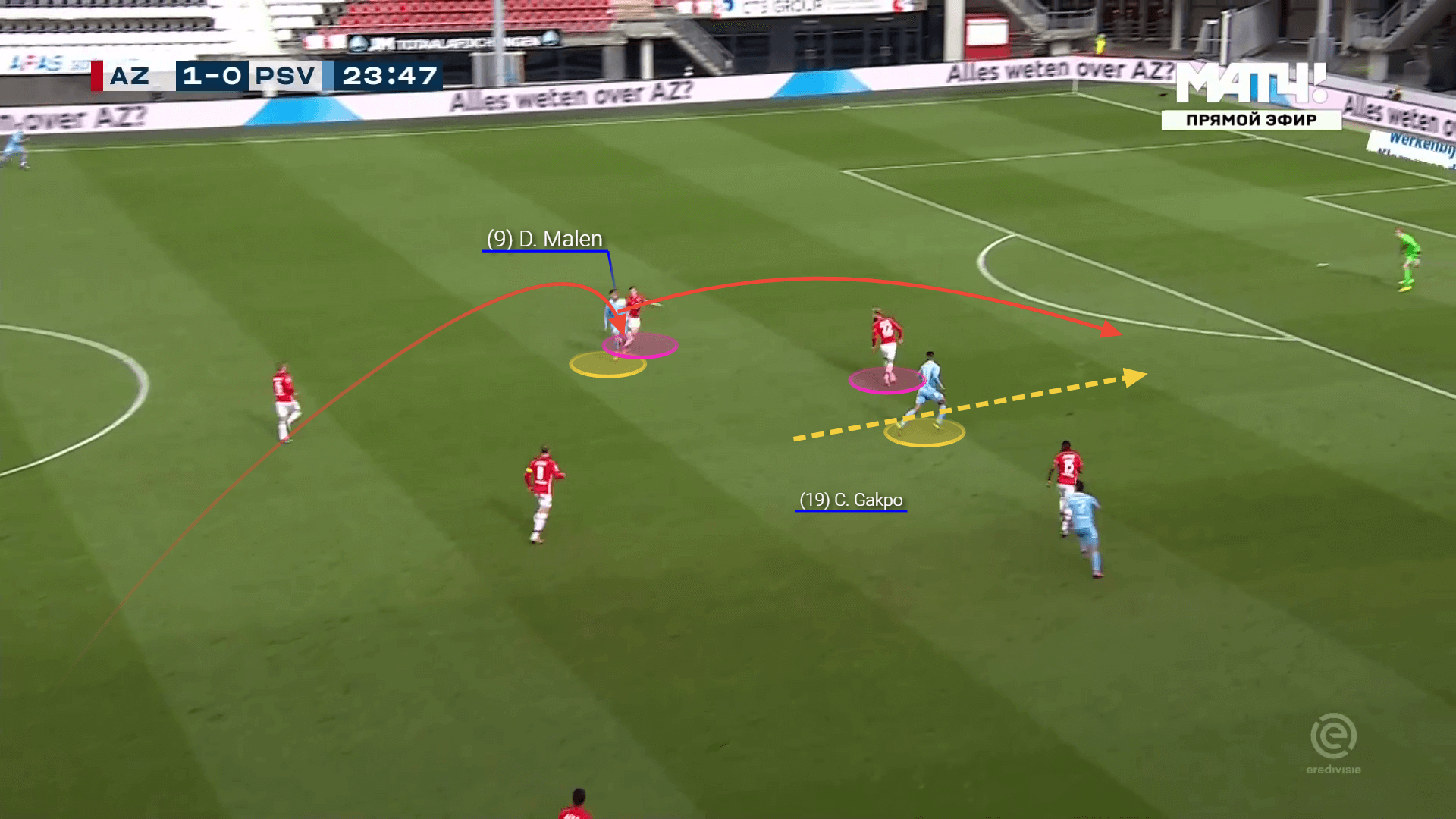
Since he most frequently plays in a partnership with another attacker in a two-man forward line, he often has the freedom to go out wide and receive the ball in efforts to progress it and then combine with his teammates in the advanced areas. This strategy works very well due to PSV’s active use of the full-backs in the attack, who would often move forward and make overlapping runs.
He often drags defenders out of position using his body language and control to lure them in the directions he wants, only to exploit the emptied area seconds later. This adds to his positional awareness since not only he exploits the gaps but also can create them by engaging the opposite players.
His movement off the ball is crucial not only for creating and exploiting spaces but also for providing additional passing options. He often relies on link-up-play as he drops back closed to the central line to pick up the ball and allow his teammates to occupy the advanced areas. His actions on and off the ball encourage these one-touch pass combinations and allow the team to have control in the opposition half.
His spatial awareness often leads to him distributing his teammates with through balls and smart passes that put them in the perfect goalscoring positions.
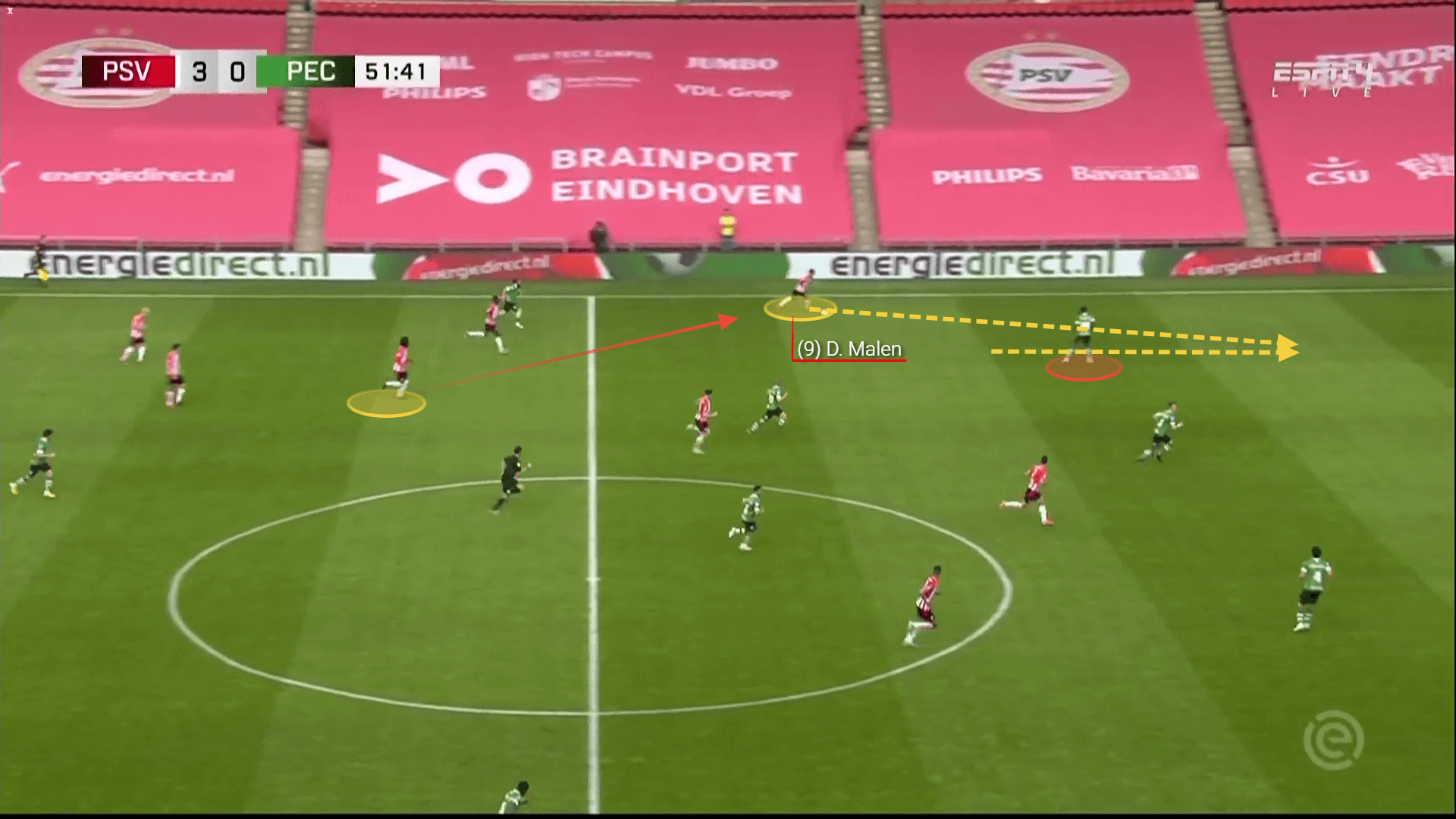
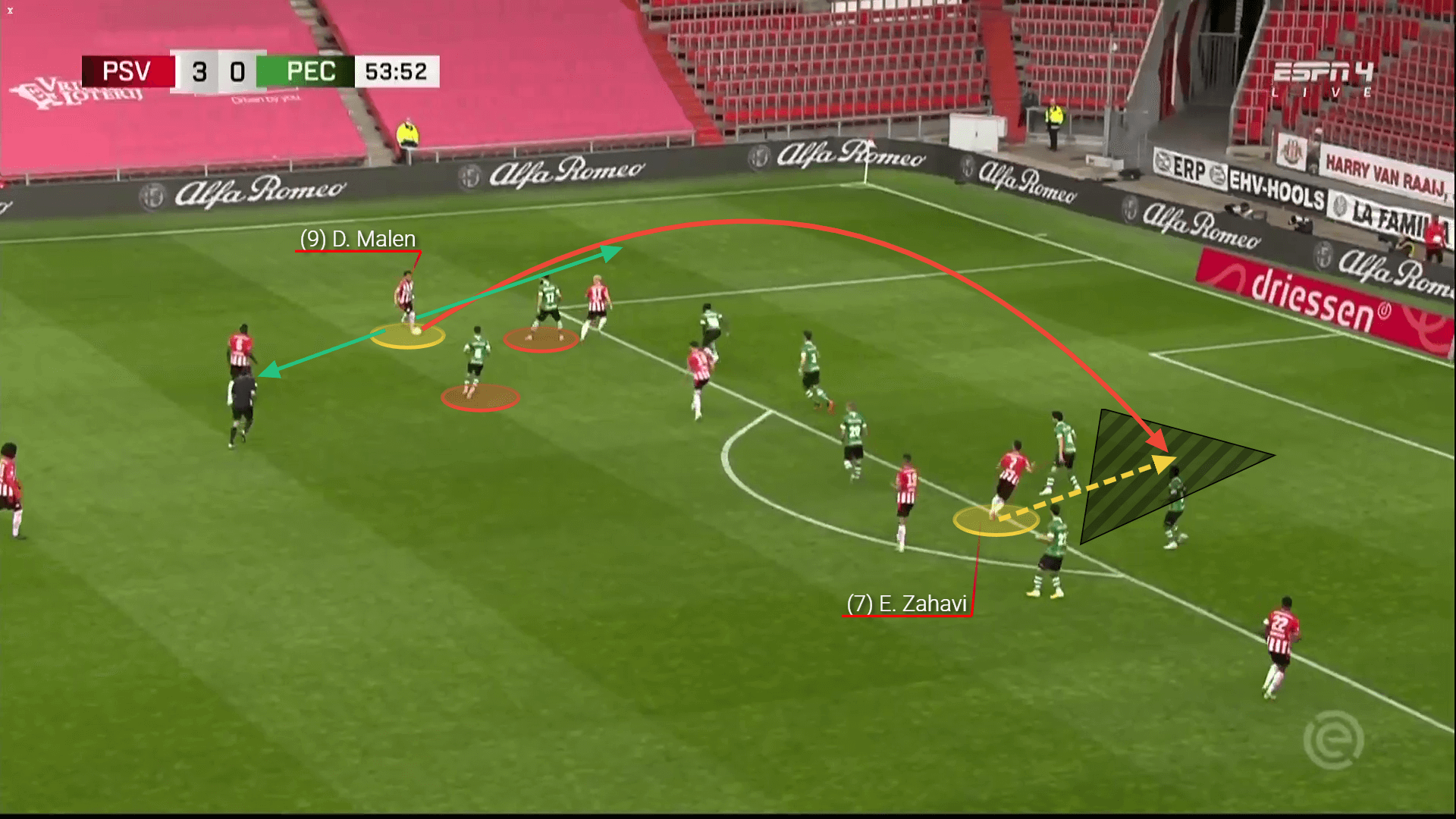
Direct threat and goalscoring abilities
Apart from the abovementioned qualities, there are a few other things that allowed Malen to succeed in the centre-forward position. While he was previously used more to provide width as a winger, his confidence on the ball and ability to hold onto it make him a great option for operating in the central areas.
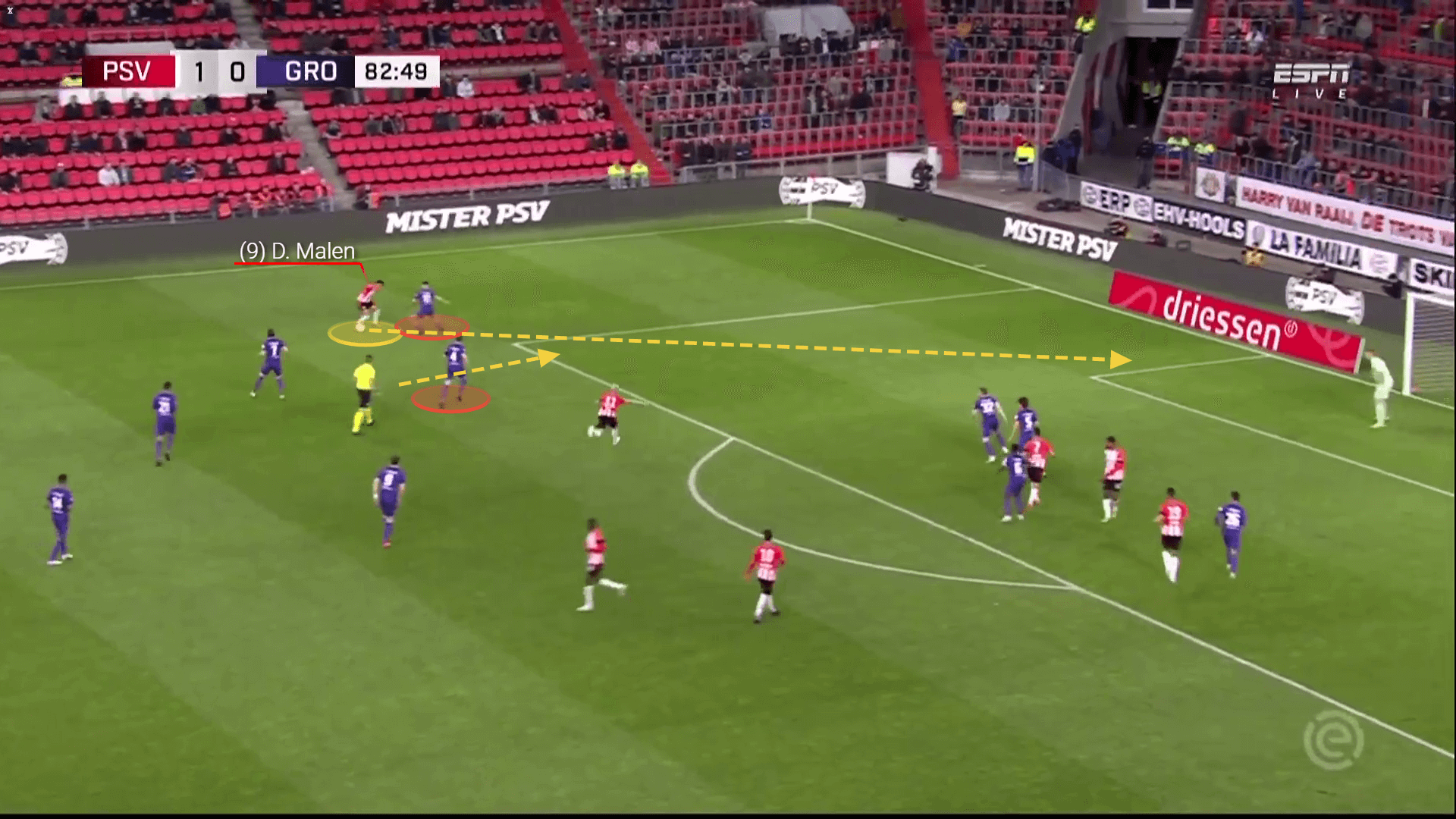
Despite him still going out wide occasionally, he often occupies the box and uses his dribbling abilities and build to take on defenders and shoot. Part of his confidence comes from his ability to play with both feet which often gives him the opportunity to shoot from difficult angles successfully. With 6.05 dribbling attempts per game on average he often managed to retain possession and advance the ball.
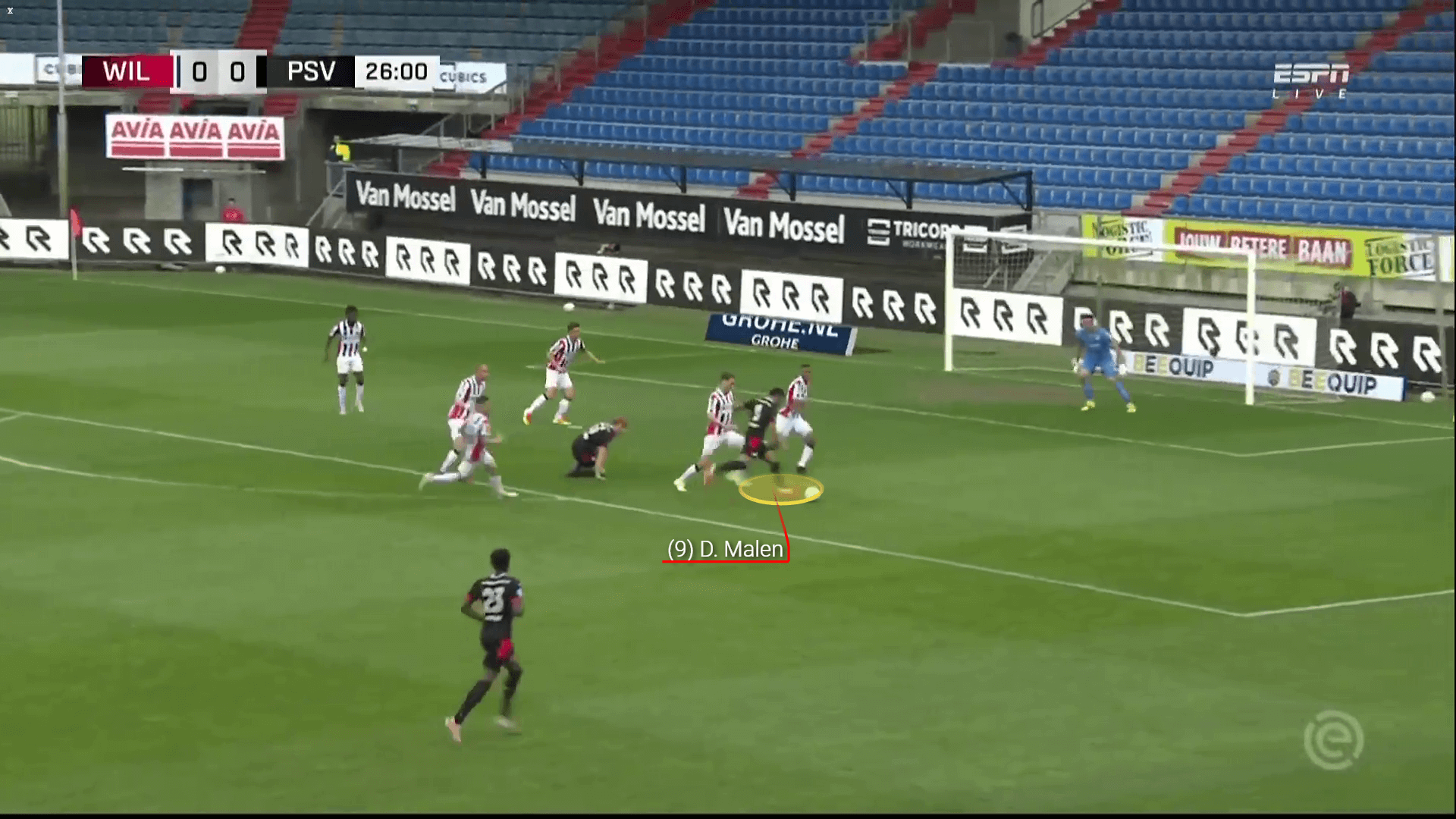
His pace often sets him in better positions than his teammates and outplays defenders, which results in providing a direct threat in front of the goal. While he doesn’t waste on his opportunities from outside the box, he is more successful from close range and many of his goals have come from the half-spaces where he likes to move around in efforts to create space.
He shoots 3.89 times per 90 on average with more than 50% of them being on target and ends up with 5.98 touches in the penalty area which are often crucial for the team’s actions in front of the goal.
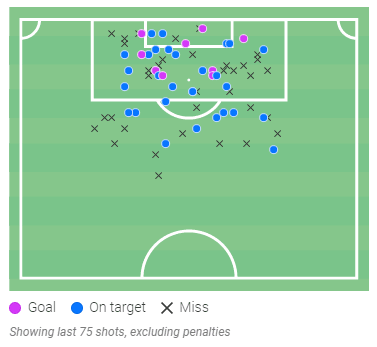
The Euro 2020 call-up
After debuting for the Netherlands in 2019 he has represented the country in nine games so far, getting an average of 55 minutes playing time, scoring twice and assisting once. The presence of Memphis Depay, who is very similar in terms of playing style, in the squad has definitely affected the time that Malen gets on the pitch.
While it is expected that Depay will be the key figure in the Euro 2020 tournament and his experience in Premier League and Ligue 1 is very valuable for the team, having a back-up option with Malen’s quality is a good sign for the Netherlands. While he lacks the experience and the playing time with this squad, his similarities with Depay could be very beneficial for the team as they could easily make a change without necessarily moving away from their identity and style of play.
The 22-year-old could be a great substitute for providing fresh ideas and keeping the high tempo up until the end. This gives the team an advantage since his pace and control could be a great boost in decisive moments when the team get tired and need fresh blood to initiate passes and create chances. Replacing Depay both centrally and in the wide areas shouldn’t be a problem for him.
Conclusion
As our analysis showed, even though he is only 22 years old, Malen showed consistency in his third Eredivisie season scoring 10+ goals in all competitions. Reaching out 27 goals in his third season in professional football shows his willingness to improve and his discipline – qualities that some of his ex-club Arsenal’s players are lacking now, making it even more regrettable that they don’t have him in their squad now.






Comments